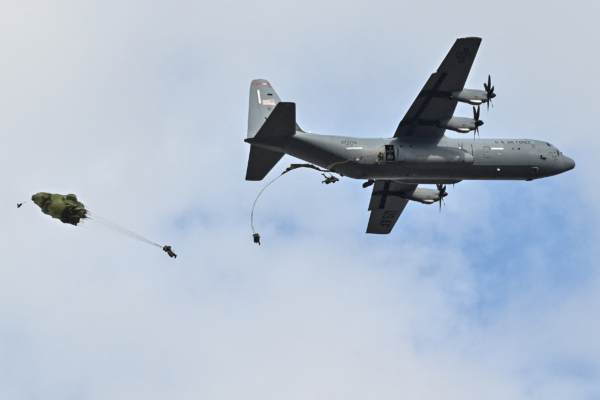The United States Air Force is adjusting its priorities for future equipment development and new strategies in the Pacific region to address the challenges posed by China in both regional and global contexts. The aim is to maintain America’s leadership position in upholding a rules-based international order.
Recently, a report from a US Air Force think tank titled “Planning Directions: How China’s Anticipated Regional and Global Strategies Could Affect US Air Force Operations” highlighted the need for the US Air Force to update its equipment development priorities in response to China’s military expansion. Emphasis is placed on innovation and long-range strike capabilities, shifting focus from complex, expensive fighter jets to high-tech, cost-effective weapon platforms, including drones and hypersonic cruise missiles.
The report points out that Beijing aims to shift the global balance of power in its favor, requiring the US to alter its defense technology focus and military strategy to maintain a decisive role globally, especially in countering China’s growing capabilities in the Indo-Pacific region and military threats to surrounding areas.
Lessons learned from the conflict in Ukraine have garnered attention from the US military, highlighting the significant resource consumption and the need for development of advanced, cost-effective weapon platforms to ensure sustained warfighting capabilities. Specific focus has been placed on long-range precision strike capabilities alongside the use of various types of drones to adapt to evolving combat landscapes.
The US Air Force is now contemplating a dispersed deployment of large military bases in the Indo-Pacific region to enhance survivability and reduce the vulnerability of potential high-value targets to Chinese missile and drone attacks. This shift underscores the importance of bolstering base defenses and exploring new strategic approaches to adapt to changing threats in the region.
Termed as Agile Combat Employment (ACE), the US Air Force’s initiative involves rebuilding key airfields such as Tinian Island, previously covered by dense jungle. This reconstruction effort, a pivotal part of reviving Pacific airfields, signifies a shift towards a more agile and dispersed operational model to mitigate risks posed by potential adversaries.
The US military’s strategy of dispersing aircraft deployments across a wider range of airfields aims to reduce the vulnerability of concentrated assets to Chinese missile threats. The emphasis on securing, upgrading, and reactivating airfields in the Indo-Pacific region highlights a strategic shift towards enhancing operational flexibility and resilience.
As the US increases its presence in the Indo-Pacific region through expanded deployments and enhanced partnerships with regional allies, efforts to improve logistics, transportation, and supply chain resilience will be critical to sustain operations in the face of evolving threats. Balancing the need for dispersed basing with robust logistics support is essential for maintaining a credible deterrent posture.
Stacie Pettyjohn, Senior Research Fellow and Director of Defense Projects at the Washington-based Center for a New American Security, emphasizes that leveraging smaller, distributed units across multiple locations in combat scenarios can reduce the likelihood of China successfully launching a large-scale initial strike. This approach adds complexity and uncertainty to China’s warfighting calculus.

